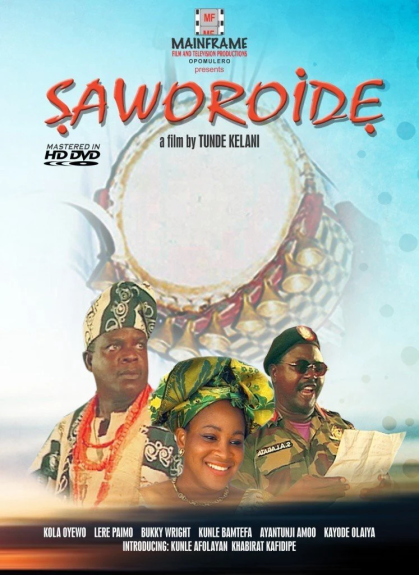By Bola Martins
Until recently, I knew little about the talking drum. The most fascinating thing about this instrument is its ability to mimic human speech. It is a prominent part of Nigerian culture and a significant percussion instrument used for communication in traditional African settings. The talking drum is one of the oldest musical instruments played by master drummers. It is a highly stylized instrument with its origins in sub-Saharan Africa.
The talking drum is an hourglass-shaped instrument with cords surrounding it. It is mostly found in West Africa and is renowned for its ability to produce varied pitches that mimic the tone and prosody of human speech. It features two drumheads connected by leather tension cords, which the drummer manipulates by squeezing between their arm and body to change the pitch.
This instrument has two base heads connected by threaded tension cords and a handle that allows the drummer to hold it securely. Beyond its physical design, the talking drum is deeply linked to spirituality. In the creative process of drum-making, artisans use wood from trees located along manmade roads—trees believed to be familiar with human language due to their proximity to travelers. Libations and prayers are performed during the crafting process to appease Ayangalu, the guardian spirit of all drummers. Once completed, the drum is believed to be imbued with the power of “eloquent talking,” giving it the ability to communicate as though it has its own voice.
The Talking Drum: A Tool for Communication

The talking drum, known as “Gangan” among the Yoruba people, holds immense communicative value. It is played to convey messages, inspire, celebrate, or mourn. Drummers use it during times of peace, war, planting, harvesting, birth, and death. In warring communities, the talking drum served as a vital tool for communication, alerting villagers or travelers of impending danger. It could summon people from distant locations such as farms and brooks or deliver critical messages and breaking news.
The linguistic function of the talking drum is remarkable. Its ability to “speak” most indigenous languages of its region is awe-inspiring. This versatility highlights the sophistication of traditional African cultures. While it is rooted in local dialects, it wouldn’t be surprising if the talking drum were adapted to communicate in English someday.
Spiritual Significance and Ayangalu

Ayangalu is believed to have been the first drummer in Yoruba land. Upon his death, he was deified and now holds a revered position among the Yoruba deities. Followers of the Yoruba religion regard Ayangalu as the patron spirit of all drummers, believing that he inspires them in the guise of a muse to play skillfully. The word “Ayan” means drummer in the Yoruba language, and families bearing names such as Ayangalu, Ayanniyi, Ayanwole, Ayanbisi, Ayangbade, Ayantunde, and Ayanwande are known to descend from hereditary drummers. These families serve as custodians of the mysteries of Ayangalu and are predominantly found in the southwestern region of Nigeria.
The Talking Drum in Popular Culture: A Nod to “Saworoide”

The cultural significance of the talking drum is beautifully captured in the classic Yoruba movie “Saworoide,” produced by Mainframe Films. This cinematic masterpiece intertwines the essence of the talking drum with themes of power, corruption, and community. In the film, the drum plays a symbolic role, serving as a tool of accountability and tradition. The talking drum is used to enforce oaths of integrity among leaders, ensuring that rulers uphold their responsibilities to the people. The story emphasizes the drum’s spiritual and political influence, showing how deeply it is woven into the fabric of Yoruba society.
Through “Saworoide,” the talking drum transcends its role as a musical instrument to become a character in its own right. It bridges the gap between the rulers and the governed, reminding audiences of the timeless values of justice and unity. The film stands as a testament to the enduring legacy of the talking drum and its role in preserving cultural heritage.
The Art of Mastery
Playing the talking drum requires immense skill and dedication. It is not merely an act of beating the drum but an intricate dance of rhythm and tone. Drummers must listen attentively to their surroundings and the messages they intend to convey, ensuring the drum’s language is clear and effective. The art of mastering the talking drum is often passed down through generations, with each new drummer adding their unique flair while honoring traditional techniques.
The drummer’s role in society goes beyond entertainment. They are historians, messengers, and spiritual guides. By narrating stories, announcing significant events, and invoking divine energies through their beats, drummers serve as vital links between the past and the present, the physical and the spiritual.
A Legacy of Resilience
The enduring legacy of the talking drum is a testament to its resilience and cultural significance. Despite the encroachment of modern technologies, the talking drum continues to hold a special place in African music and ceremonies. Its ability to bridge gaps between generations and cultures ensures its relevance in an ever-evolving world.
Beyond Africa, the talking drum has made its mark on global music. Artists and performers worldwide have embraced its unique sound, incorporating it into diverse genres and exposing new audiences to its magic. This cross-cultural appreciation underscores the drum’s universal appeal and its potential as a tool for fostering global understanding.
Conclusion
The talking drum is more than a musical instrument; it is a symbol of communication, tradition, and spiritual connection. Its eloquence transcends the boundaries of language, resonating with anyone willing to listen. As we celebrate the talking drum, we honor not only its historical significance but also its capacity to inspire and unite people across the world.
The rhythmic beats of the talking drum remind us that amidst the noise of modern life, there is power in simplicity, beauty in tradition, and strength in community. The legacy of the talking drum, as depicted in cultural artifacts like “Saworoide,” serves as a profound reminder of the values that bind us together as a people.
